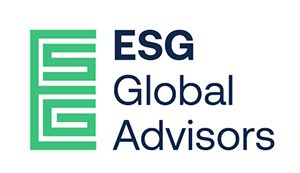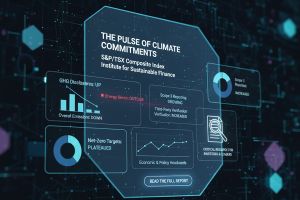Back to the Learning Academy.
What's in Scope?

We asked our ESG 101 Contributors what recommendations they have for companies attempting to report Scope 1, and 2 emissions for the first time. Their insights are shared in this article. Feel free to reach out to them should you need guidance with your ESG strategy.
Canada Climate Law Initiative
The most important recommendation we have for companies is to start the process. We know that mandatory climate-related financial risk disclosure is coming quick. Businesses that begin now can prepare for what's to come, while building trust and credibility through transparency. Reporting on Scope 1 and 2 emissions may even give businesses a competitive advantage, providing management with new insights to how their business operates and enhancing their ability to predict and respond to climate-related risks.
Understanding the daunting nature of the task of reporting for the first time, the Canada Climate Law Initiative offers free and confidential presentations to boards of directors who aren't sure where to begin or have questions about the process. Our experts help Canadian businesses:
- Explore existing sustainability standard-setting and reporting frameworks
- Help businesses determine how to credibly report emissions and communicate sustainability
- Understand their fiduciary duties with respect to climate change
- Avoid greenwashing claims and other liability risks
Collecting and reporting on emissions is an iterative process. Get familiar with disclosure regulation and reporting, and work to improve it through repetition and internal and external verification. Consider a phase-in approach, starting with just one area of business or location, before tackling the bigger picture. Take steps now to prepare for more rigorous reporting and disclosure demands.

ESG Global Advisors
ESG Global Advisors' top recommendation for companies disclosing scope 1 and 2 emissions for the first time is: Don't let perfect be the enemy of the good.
Companies rightly want to aim for precision in all of their corporate disclosures, but carbon accounting is a nascent and fast-evolving field. Even companies that have been disclosing their emissions for years face challenges such as collecting quality data, making accurate assumptions, defining boundaries, and more.
Emissions data management is a challenge for market participants as source data are often based on estimates or incomplete information.
In short, the carbon accounting landscape is imperfect, so a company disclosing its scope 1 and 2 emissions for the first time should not aim for perfection as doing so is unviable in most cases. Aiming for perfection could also lead to delayed action from the company, which comes with risks such as falling behind its peers on adoption and organizational learning.
Instead, companies should proceed with disclosure on a good-faith, best-efforts basis with the following considerations in mind:
- Document any assumptions or gaps in data and establish a plan to address them in future reports.
- Ensure processes are clearly documented to establish audit trails at the outset, for future clarification if needed.
- Consider hiring an external expert to help establish a baseline using the GHG protocol.

CPA Canada
To report Scope 1 and 2 emissions, organizations will need to establish appropriate GHG emissions management systems along with tools to identify, implement, measure, monitor and report on GHG emissions. Traditionally, sustainability and GHG emissions reporting have been housed in separate functions than financial reporting. Increasingly, with more integrated views of reporting, companies are establishing cross-functional teams to respond to climate-related risks and opportunities. CPAs can act as the hub to link climate-related risks and GHG emissions with core strategy, risk management and performance activities.
To be successful, establishing a strong tone at the top is key for organizational buy-in. This includes guidance on establishing clear accountabilities, internal controls, and procedures over GHG data collection and reporting. To help companies get started, CPA Canada's GHG Emissions Management Guideline provides a five-step process for establishing a comprehensive GHG emissions management system.

The Delphi Group
Requests for Scope 1 and 2 emissions information are ramping up and can come from investors, customers, and/or ESG scoring agencies. To ensure effective reporting of Scope 1 and 2 emissions, we recommend that you start by (1) identifying the specific stakeholders you wish to report to, (2) understanding their needs, and (3) developing a comprehensive communication strategy that encompasses the metrics and reporting frameworks you will be using.
Bonus tip: In addition to including key metrics in your climate and ESG reporting, Scope 1 and 2 emissions data can be a strong foundation for your company's climate strategy. However, we recommend that you try and avoid the pitfall of developing a strategy based solely on these numbers. Consider conducting a screening of climate-related risks and opportunities for your organization (the recommendations of the Task Force on Climate-Related Financial Disclosures, or TCFD, provide examples of risks and opportunities that you could consider, even if you are not ready for a formal TCFD disclosure). The results will enable you to assess the relative importance of Scope 1 and 2 emissions compared to other components that you may also want to consider, such as value chain (Scope 3) emissions and physical climate impacts. By evaluating risks and opportunities, you can form a holistic approach towards addressing climate change within your organization.




